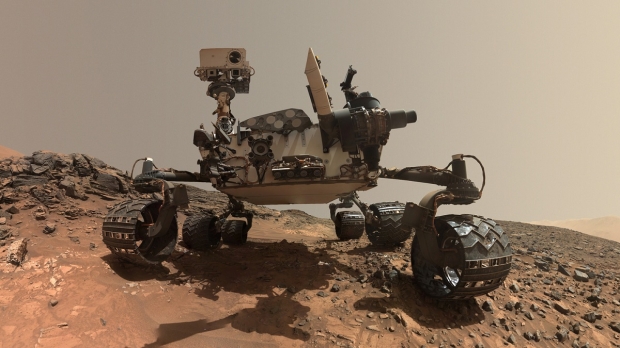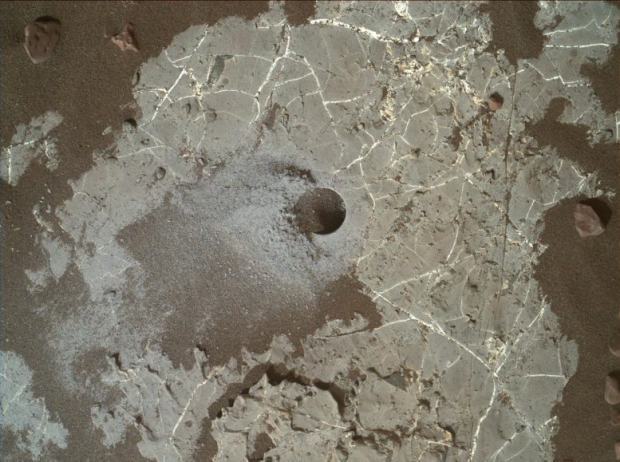Researchers have penned a new study that details an analysis of carbon isotopes in sediment samples taken by NASA's Curiosity rover located in the Gale Crater, Mars.

Curiosity has spent the last nine years roaming the surface of the Gale Crater, and along the way, it has taken samples of rock that have then been analyzed by its instruments. The data from that analysis is then relayed back to researchers on Earth for interpretation. According to a new study published in the Proceedings of the National Academy of Sciences, analysis on carbon isotopes has uncovered three possible origins for the carbon.
Researchers note that all three of the possible origins of the carbon are "unconventional", and are "unlike processes common on Earth." The researchers explained that carbon has two stable isotopes, carbon 12 and carbon 13. By examining how many of each are in a sample, the researchers can determine, to at least some degree, the specifics of the carbon's origin despite the age of the sample.
Here are the researchers three possible explanations for the carbon -
A cosmic dust cloud - Christopher H. House, a professor of geosciences, Penn State, explained that every couple of 100 million years, the solar system passes through a cosmic dust cloud that could have created a layer on Mars that was then sampled by Curiosity.
Ultraviolet radiation breaking down carbon dioxide - The researchers state that the ultraviolet conversion of carbon dioxide into organic compounds may be a possible explanation of the reduced number of carbon 13. However, the researchers note that more "experimental results" are needed before that explanation can be ruled in/out.

"There are papers that predict that UV could cause this type of fractionation.However, we need more experimental results showing this size fractionation so we can rule in or rule out this explanation," said House.
Ultraviolet degradation of biologically created methane. - This explanation is probably the most interesting as the researchers state that ancient Mars may have had lots of methane below the surface that rose and was then consumed by surface microbes, or reacted with ultraviolet light. Both explanations would result in carbon 13 being deposited onto the surface of Mars for Curiosity to sample.
Notably, the researchers write that there is currently no evidence of surface microbes, so at the moment, the aforementioned explanation leans on the ultraviolet light possibility.
"All three possibilities point to an unusual carbon cycle unlike anything on Earth today. But we need more data to figure out which of these is the correct explanation. It would be nice if the rover would detect a large methane plume and measure the carbon isotopes from that, but while there are methane plumes, most are small, and no rover has sampled one large enough for the isotopes to be measured," said House.
"We are being cautious with our interpretation, which is the best course when studying another world. This research accomplished a long-standing goal for Mars exploration," said House. "To measure different carbon isotopes - one of the most important geology tools - from sediment on another habitable world, and it does so by looking at 9 years of exploration," added House.


